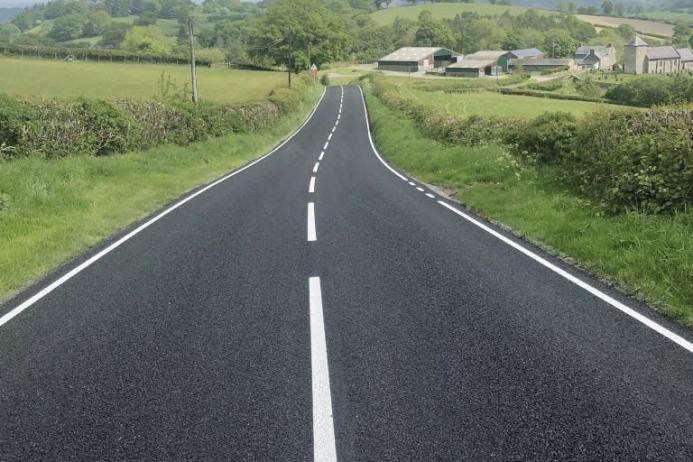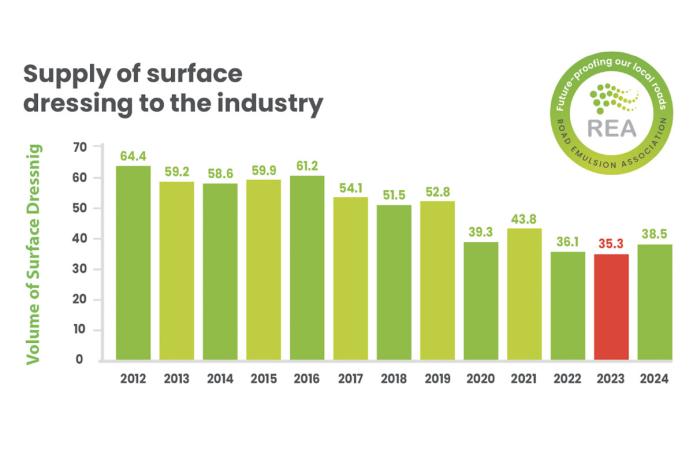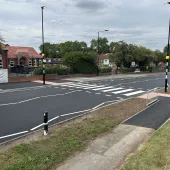How PME can prevent the next pothole pandemic

First published in the June 2025 issue of Quarry Management
REA secretary Kevin Maw explains.
For decades, the UK had boasted a well-maintained network of local roads, which make up 97% of the nearly 210,000 miles of roadways. UK roads are resurfaced only once every 80 years on average, according to a 2024 report, a duration well beyond the recommended resurfacing frequency of 10–20 years.
What is the secret to the longevity of local roads in the UK? According to Kevin Maw, secretary of the UK’s Road Emulsion Association (REA), an important factor is the regular application of surface dressing, a simple but highly effective preventative maintenance technique.
‘Surface dressing has been routinely applied to extend road life, prevent damage, and keep maintenance costs down. It’s the main reason so many UK roads have lasted 80 to 90 years without a full resurface,’ Mr Maw explained.
A worrying decline
But the UK’s long-standing success with preventative maintenance has hit a major bump in the road in recent years. Surface dressing volumes have fallen 46% since 2012, according to REA data, while pothole numbers and repair costs have soared.
‘This is no coincidence,’ said Mr Maw. ‘When preventative maintenance is abandoned, road conditions deteriorate rapidly, leading to a vicious cycle of reactive repairs.’
A century of surface dressing evolution
Despite recent declines, surface dressing has been a pillar of UK road maintenance for nearly a century.
UK-based bitumen emulsion manufacturers organized under the REA back in 1928, together supplying the country with the materials needed to help extend the life of local roads. In the 1970s, the industry began shifting from unmodified bitumen emulsions to those featuring polymer-modified bitumen (PMB). By the early 2000s, polymer-modified emulsions (PMEs) had become the industry standard.
‘The UK is now almost entirely reliant on PMEs for surface dressing,’ said Mr Maw.
The benefits of PME in surface dressing
PME’s rise in the UK is no surprise to Mike Lancaster, Nynas UK technical and operations manager, who says polymer modification greatly enhances emulsion performance.
‘Unlike unmodified emulsions, PMEs provide elasticity to prevent aggregate loss in colder conditions while reducing softening in high temperatures,’ he explained. ‘This ensures a longer-lasting, more resilient road surface.’
A key advantage is lower application temperatures, which reduces energy consumption, improves worker safety, and cuts carbon emissions. PME surface dressing also requires far fewer materials than full asphalt resurfacing.
‘A full asphalt resurfacing job removes and replaces at least 50mm of material. That’s a lot of aggregate and bitumen. With surface dressing, you apply a much thinner layer, reducing resource use and waste,’ Mr Lancaster explained.
Years of heavy traffic, no potholes
These benefits have made PME the default choice in the UK, making up nearly all emulsions used for surface dressing.
A prime example is a section of the A5 trunk road between West Felton and Oswestry, in Shropshire, surface dressed in 2010 using a Nynas PME product. Despite 14 years of heavy traffic, it remains in service without potholes.
‘The A5 proves that when properly designed and applied, surface dressing can provide long-term durability even on major highways,’ said Kevin Maw.
The cost of inaction
Despite clear benefits, declining surface dressing volumes have left the UK with a £16.3 billion backlog in road repairs, as local councils battle a ‘pothole pandemic’.

‘Twelve years of decline means local councils are now reactive instead of proactive,’ explained Mr Maw. ‘Instead of maintaining roads before they fail, they’re forced into a ‘whack-a-mole’ approach – resurfacing one square metre at a time, pothole by pothole.’
Mr Maw says it is unfortunate that maintenance spending collapsed just as surface dressing technology was reaching new heights.
PME as pothole pandemic antidote
To reverse this trend, the REA has been lobbying for increased preventative maintenance funding, and early signs suggest the message is getting through – 2024 data shows surface dressing volumes rising for the first time in a decade.
While Mr Maw admits it will take years to repair the damage of underfunding, he believes PME will be key to turning the tide – and helping other markets avoid the same fate.
‘The UK should serve as a cautionary tale about what happens when preventative road maintenance is ignored,’ he said. ‘PME is a more affordable, effective, and sustainable option than chasing potholes or resurfacing. As it proves itself even under demanding conditions, I expect it will become increasingly popular in other markets.’
Subscribe to Quarry Management, the monthly journal for the mineral products industry, to read articles before they appear on Agg-Net.com








